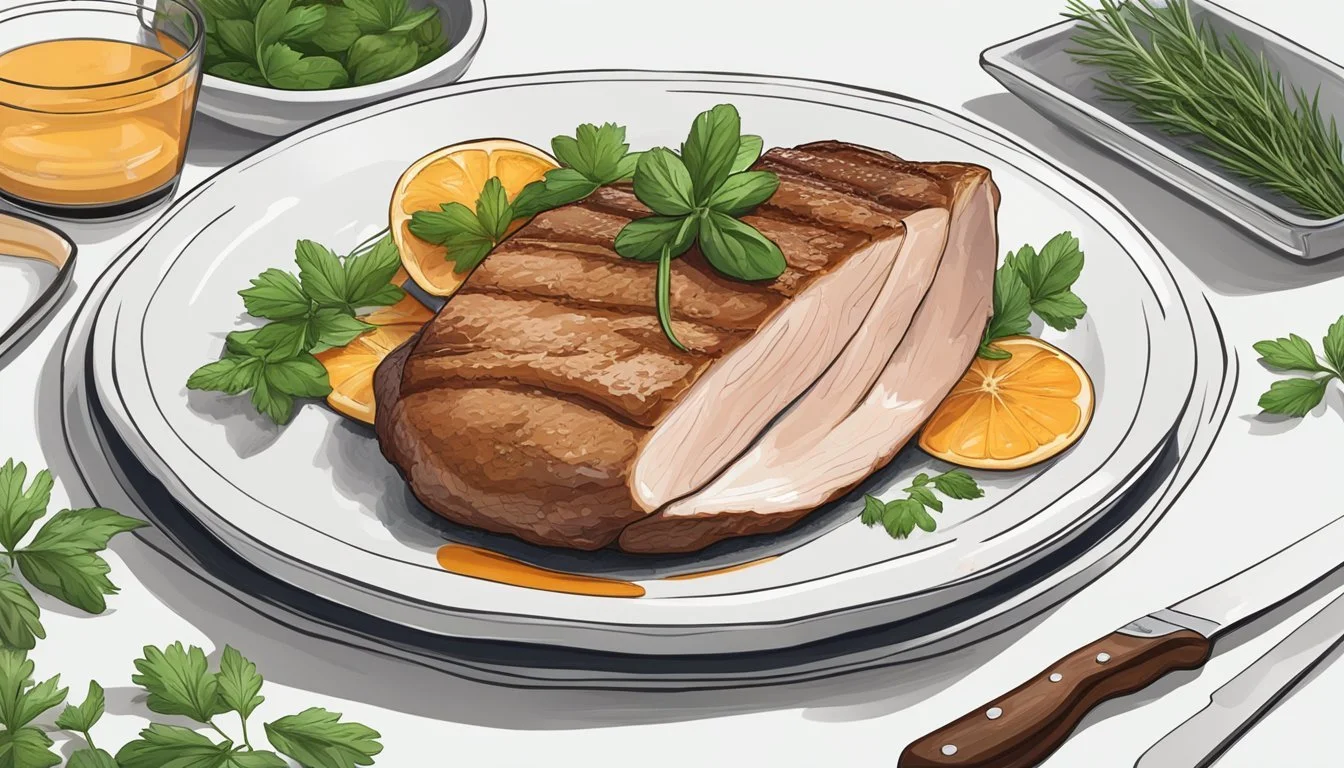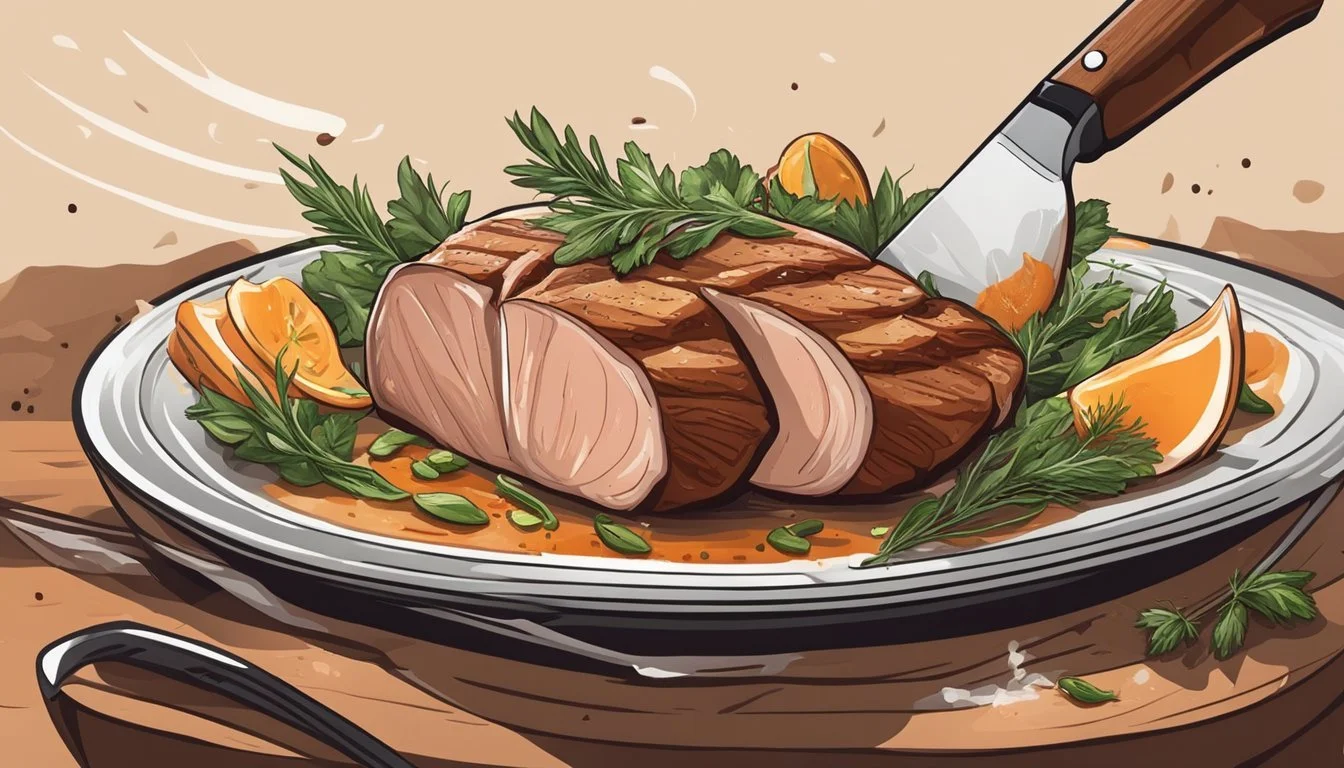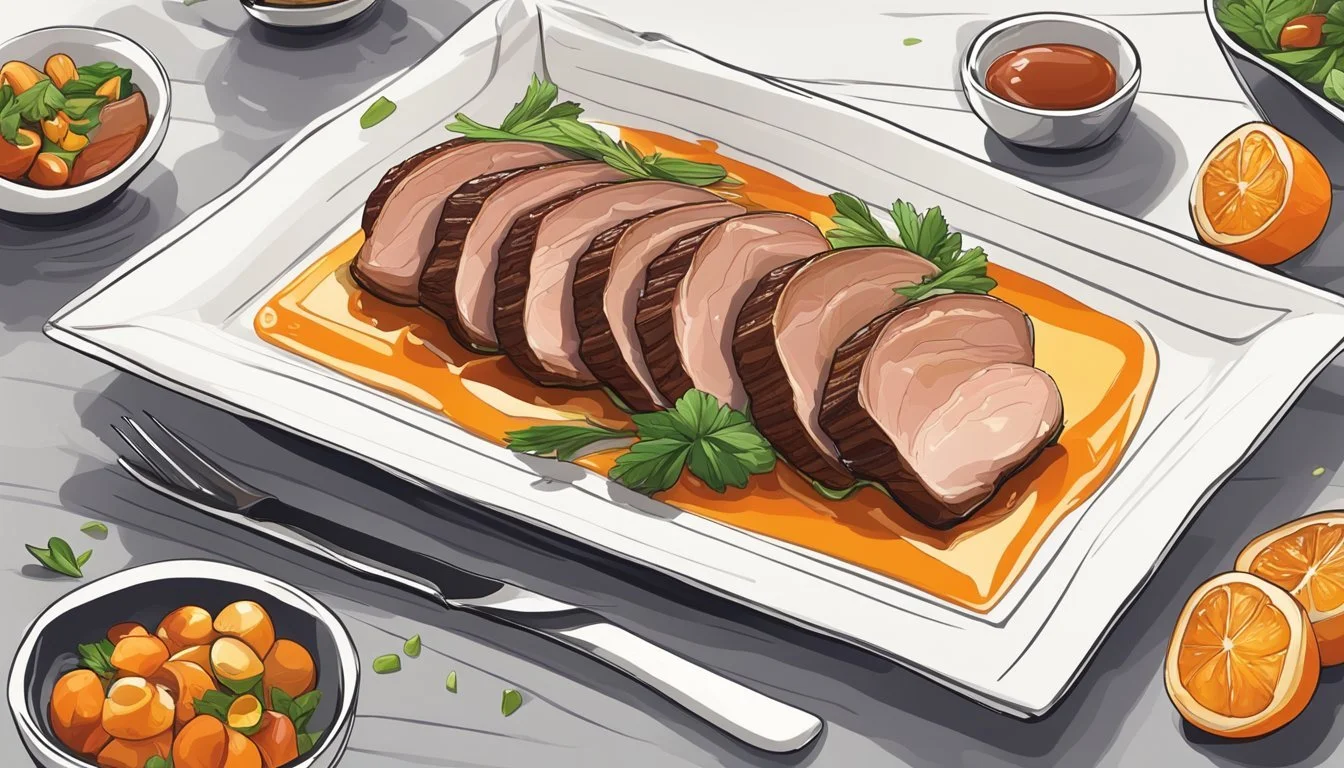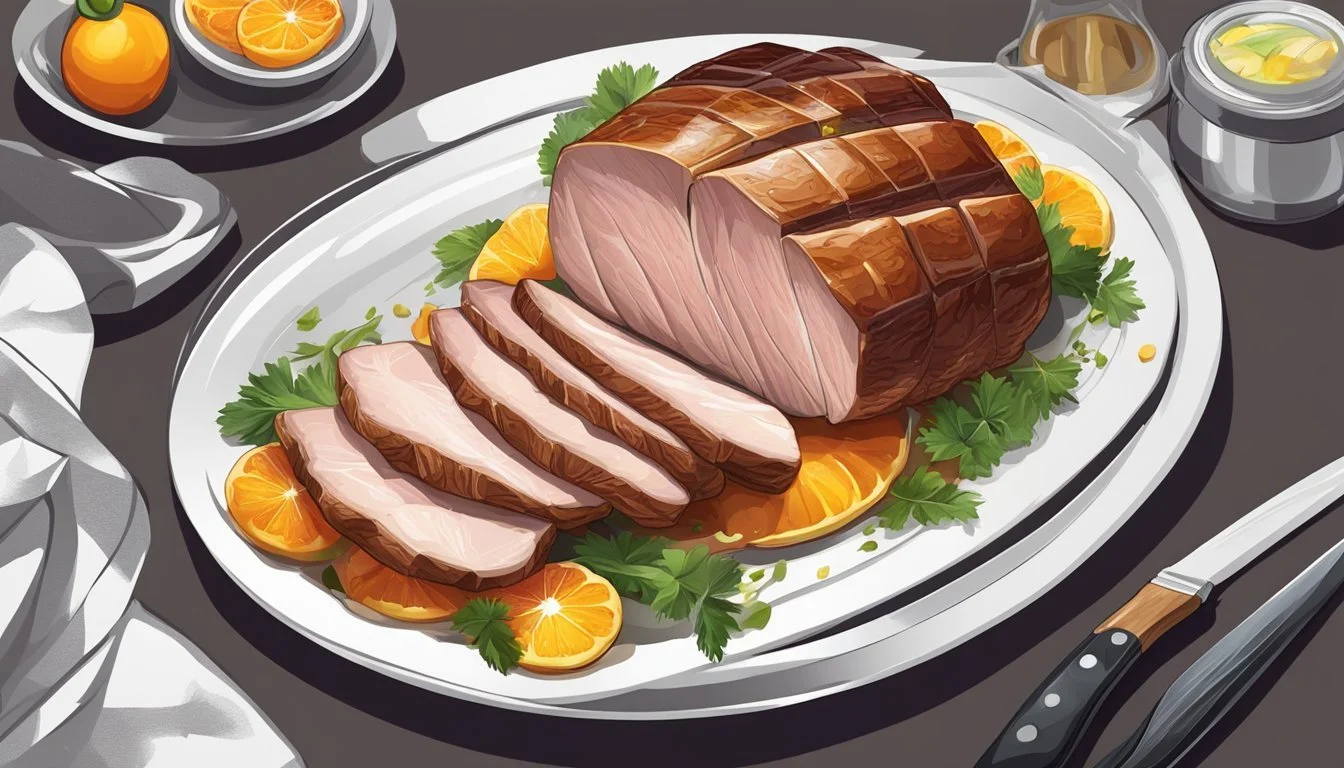How to Eat a Duck Breast:
A Practical Guide to Enjoying This Delicacy
Duck breast is a culinary delicacy known for its rich flavor and succulence, often considered a treat in fine dining establishments and amongst home cooks who appreciate gourmet experiences. The meat finds a delicious middle ground between white and dark, offering a taste more robust than chicken or turkey. Eating duck breast, when cooked correctly, provides a tender and moist interior beneath a crisp, rendered skin. A key aspect of enjoying duck breast is ensuring that it is cooked to the right temperature, generally between 128°F and 130°F, to achieve the perfect balance of texture and flavor.
Proper preparation and cooking techniques can make a significant difference in the overall eating experience of duck breast. The meat is versatile and can be prepared using various methods including pan-searing, roasting, or sous vide. When pan-searing, pressing the meat gently ensures that the skin comes into full contact with the heat, leading to that desirable crispness. Resting the meat before slicing is also crucial in retaining the juices and providing a more flavorful and enjoyable eating experience.
The accompaniments served with duck breast are just as important as the cooking process itself. Complementary sides and sauces, such as fruit reductions or spice-infused glazes, can elevate the dish to new heights. Duck breast can be an exotic addition to a regular meal rotation or the centerpiece of a special occasion dining experience, offering a satisfying and well-rounded flavor profile when combined with thoughtful pairings and expert preparation.
Understanding Duck Breast
Duck breast, the centerpiece of many gourmet dishes, is a succulent piece of meat that combines the richness of red meat with the refined taste of poultry. When cooked properly, it can deliver a delicious and satisfying dining experience, whether prepared as a simple seared filet or incorporated into a complex recipe.
Duck Varieties
There are several varieties of duck, but the most commonly consumed in culinary contexts is the Pekin duck. This breed features a generous breast with a thick layer of fat, highly valued for its flavor. Wild ducks are also sought after, typically having leaner meat that offers a more gamey taste.
Nutritional Value
Duck breast is known for its high protein content and provides a good source of B vitamins and minerals. Despite its richness, it's a beneficial part of a diet when consumed in moderation.
Preparation Basics
Prior to cooking, duck breast should be brought to room temperature to ensure even cooking. Scoring the skin without cutting into the meat is essential for rendering the fat, resulting in crispy skin and juicy meat.
Cookware Selection
A cast iron skillet or a French top with burners is ideal for cooking duck breast due to their heat retention and even distribution. These tools are key for achieving a beautifully seared and evenly cooked duck breast.
Measuring Doneness
Using an instant-read thermometer is the most reliable way to measure the doneness of duck breast. For medium-rare, the internal temperature should be between 128°F and 130°F.
Resting and Slicing
After cooking, the meat should rest, tented with aluminum foil, for about 5 minutes to allow the juices to redistribute. Always slice against the grain to ensure tenderness.
Seasoning Pairings
Duck breast pairs well with robust flavors such as orange zest, rosemary, and thyme. Generously seasoning with kosher salt and freshly ground black pepper is crucial for enhancing its natural flavors.
Introduction to Cooking Techniques
The process usually includes searing the duck breast over low heat to render the fat, followed by cooking at a higher temperature to finish. Proper rendering and searing yield a delectable balance of textures.
Safety Tips
Safe poultry practices are a must. Always ensure that duck breast is cooked to a safe minimum internal temperature and that all surfaces and utensils are properly sanitized after use to prevent cross-contamination.
Preparation Techniques
Preparing duck breast properly is the key to enhancing its rich flavor and achieving the desired texture, particularly the sought-after crispy skin. The process involves scoring, brining or marinating, and tenderizing.
Scoring the Skin
Scoring the skin of a duck breast is a critical step that one should not skip. Making shallow cuts in a crisscross pattern helps the fat render more effectively during cooking. The skin becomes crispy as the fat melts away evenly, and this technique also prevents the skin from shrinking too much, which can cause the meat to curl up.
Brining and Marinating
One may choose to either brine or marinate duck breast before cooking it. A simple brine with salt, sugar, and water can help keep the duck breast moist and flavorful. On the other hand, a marinade, be it sweet or citrus-based, can add layers of flavor. Whether one opts for sweet elements like maple or fruit-based juices, the goal is to complement the natural richness of the duck.
Tenderizing
While duck breast, much like venison backstrap, is naturally tender, gently piercing the meat with a fork can help any added flavors penetrate the surface. However, be careful not to overdo it; excessive tenderizing is unnecessary and can harm the muscle fibers, affecting the texture adversely.
Cooking Methods
In order to cook duck breast properly, it is essential to pay attention to cooking methods that ensure the skin is crispy and the meat is cooked to a medium-rare temperature. The following subsections explore various techniques for cooking duck breast.
Pan Searing
For pan-searing duck breasts, one should begin with scoring the skin to facilitate fat rendering. The duck breasts are then placed skin-side down in a cold pan. Cooking is started on low heat, gradually increasing until the skin is crispy and golden-brown. This process usually takes about 8 to 10 minutes. Then, the breast is flipped over, and the other side is cooked for a few minutes until it reaches an internal temperature of approximately 130°F to 135°F for medium-rare.
Oven Roasting
Oven roasting is a two-step process. Start with searing the duck breasts skin-side down in a pan, then transfer them to a preheated oven, usually around 400°F. The roasting process takes about 5 to 10 minutes, depending on the desired doneness. Utilize a meat thermometer to ensure an internal temperature of 130°F to 135°F for a medium-rare result.
Sous Vide Technique
The sous vide technique involves vacuum-sealing the duck breasts and cooking them in a water bath at a precise temperature, usually around 131°F for medium-rare. The cooking time typically ranges from 1 to 2 hours. After sous vide cooking, the duck breasts are quickly seared in a hot pan to crisp up the skin.
Stir-Frying Method
For the stir-frying method, one first cuts the duck breast into thin slices. In a wok or frying pan, a high-heat stir-fry is done rapidly, usually with vegetables and a flavorful sauce. The thin slices of duck require just a few minutes to cook through, maintaining tenderness and preventing overcooking.
How to Poach Duck
Poaching is a gentle method where duck breasts are submerged in a seasoned liquid, such as a broth or wine-based poaching liquid. The liquid is brought to a simmer, and the duck breasts cook slowly until tender, reaching a safe internal temperature between 160°F to 170°F, which is generally higher than the medium-rare target of other methods due to the nature of poaching.
Each method enhances the rich flavor of duck breasts when executed with precision, consistent temperature control, and an understanding of the duck's natural fat content.
Creating Accompaniments
When serving duck breast, the right accompaniments can elevate the dish, enhancing its rich flavor with complementary textures and tastes. Careful preparation of pan sauce, side dishes, and garnishes is key to a memorable dining experience.
Preparing Pan Sauce
After cooking the duck breast, one can utilize the fond left in the pan to create a flavorful pan sauce. The cook deglazes the pan with a splash of white wine, scraping up the browned bits, which are essential for building depth of flavor. They may then add homemade chicken stock, reducing the mixture to a desired consistency before whisking in cold butter for richness. A touch of orange juice brings a tart dimension to the pan sauce, adding a hint of fruitiness that pairs well with the duck.
Selecting Side Dishes
A cohesive meal includes side dishes that complement the main course without overpowering it. For duck breast, options might include:
Vegetables: Asparagus or broccoli, either steamed or sautéed, offer a fresh counterpoint to the duck’s richness.
Starches: Risotto or mashed potatoes make for hearty, comforting choices. One could enhance mashed potatoes with a hint of roasted garlic or truffle oil for an elegant touch.
Grains: A well-prepared risotto contributes a creamy texture, which marries well with the flavor of duck breast.
Crafting Garnishes
Garnishes should not only be visually appealing but also add to the overall flavor profile. Thin slices of fig or a twist of orange zest can introduce a sweet-tart note that cuts through the richness of the duck. A chef might also present the dish with a sprig of fresh herbs, such as thyme or rosemary, which can impart a subtle, aromatic quality to the dish, completing the gastronomic experience.
Finishing Touches
Finishing touches elevate the succulent flavors of duck breast and are essential for serving a perfectly cooked meal.
Achieving Crisp Skin
The hallmark of well-prepared duck breast is its crisp skin. To achieve this:
Pat the skin of the duck breast dry to ensure it crisps up effectively.
Render the fat by cooking the duck breast skin-side down over medium heat until the skin is a deep golden brown. Do not rush this process as it allows the fat to slowly render out, leaving the skin crispy.
Making Reductions
A reduction harnesses the power of fond; the caramelized bits left behind, and combines it with a liquid, such as red wine, to create a flavorful sauce.
After cooking the duck, remove it and use the same pan to add a liquid like red wine or stock.
Allow it to simmer and reduce, scraping the fond from the bottom of the pan to incorporate all the delicious flavors into the sauce. The reduction should lightly coat the back of a spoon when it is ready.
Use of Foils and Covers
Utilizing aluminum foil or covers during cooking can be essential in maintaining ideal temperatures.
After the duck breast reaches the desired internal temperature, transfer it to a plate and tent it loosely with aluminum foil. This allows for the distribution and retention of heat, keeping the meat warm.
Duck fat can be reserved and used to cover the breast while resting; it not only keeps the food warm but also introduces additional moisture, which can enhance the overall texture.
By paying close attention to these finishing touches, the duck breast served will be both visually appealing and delicious, with a balanced harmony of textures and flavors.
Serving and Presentation
When serving duck breast, one aims to elevate the dish's inherent elegance. Execution of proper plating techniques and wine pairings can accentuate the delicious and tender qualities of a medium-rare duck breast.
Plating Techniques
For a visually appealing presentation, one should slice the duck breast into even pieces, fanning them out on the plate to showcase the medium-rare center. An elegant touch includes placing a sprig of rosemary or a pinch of orange zest atop the meat for a burst of color and flavor.
Pairing with Wines
White Wine: A crisp and fruity white wine, such as a Chardonnay or Riesling, can balance the richness of the duck.
Red Wine: A light red, like Pinot Noir, complements the gamey nuances without overpowering the dish.
Room Temperature: Ensuring the wine is served at its optimal temperature enhances the pairing, typically around 55°F for whites and 65°F for reds.
Temperature Considerations
Duck breast is best enjoyed medium-rare, which is typically achieved when the internal temperature reaches 130°F. Serving it at this temperature ensures the meat remains juicy and tender.
Garnishing
Garnishing should not detract from the main ingredient. Simplicity is key, with options such as:
Herbs: Rosemary or thyme for an aromatic touch.
Citrus: Grated orange zest can add a fresh and vibrant note with delightful contrast to the duck's richness.
Cleanup and Storage
After enjoying a delicious duck breast, proper cleanup and storage are crucial to maintaining food safety and quality. The key to effective storage is prompt and careful packaging to prevent contamination and preserve the meat's flavor.
Safely Storing Leftovers
When one has leftovers, they should be stored safely to extend their shelf life while preventing bacterial growth. Duck breast should be cooled to room temperature quickly — typically within two hours of cooking. It is recommended for the meat to be sliced and placed in an airtight container. If unsalted butter was used during cooking, it can solidify upon refrigeration, so one should ensure that the duck breast is stored without excess cooking fat.
Leftovers can be wrapped in aluminum foil or placed into a container before being refrigerated. The duck should be consumed within three days when stored in the refrigerator. For longer-term storage, duck breast can be frozen. To freeze, the meat should be wrapped tightly in aluminum foil, and then placed in a freezer bag or airtight container to avoid freezer burn. Label the package with the date, and use within three months for best quality.
Care should be taken to avoid cross-contamination with other food during storage. Always place the duck breast on a shelf above raw items to prevent any possible drips that could contaminate other food.
Advanced Tips
In elevating the culinary experience of duck breast, attention to detail can dramatically enhance flavors, modify cooking surfaces for distinct textures, and address the unique considerations of game duck.
Enhancing Flavors
For an infusion of more complex tastes, marinating duck breasts prior to cooking can add depth. A blend of aromatic herbs like thyme and rosemary, combined with rich balsamics or fruit zests, will complement the natural flavors of the duck. In the last few minutes of cooking, the chef might consider adding a pat of butter, allowing it to sizzle around the meat, which not only adds richness but also helps to achieve a glossy, caramelized finish.
Alternative Cooking Surfaces
While a traditional cast iron skillet is lauded for its heat retention and even cooking, alternative surfaces like a French top can provide a wider heat gradient. This allows the cook to sear the duck breast over intense heat where it sizzles and bubbles, then to move it to a cooler area for gentler cooking. It ensures the skin crisps perfectly without overcooking the delicate meat.
Handling Game Duck
Wild game, such as wild duck, requires more careful preparation due to its leaner profile and gamier taste. Game duck should be brought to room temperature before cooking to ensure even heat distribution. It is advantageous to sear game duck breasts over high heat rapidly before lowering the temperature, which helps to preserve moisture and tenderness. Each duck species, from teal to the larger Canada geese, will have different ideal rest times post-cooking, reflecting the size and density of the meat.










